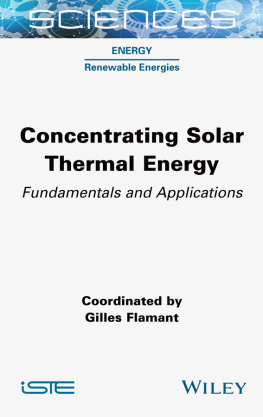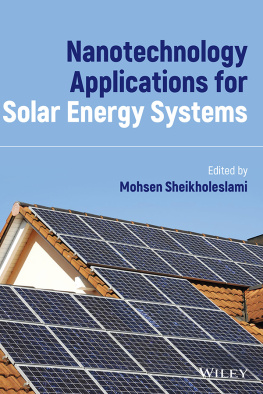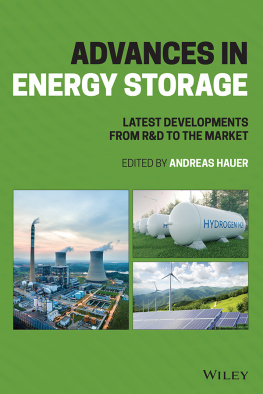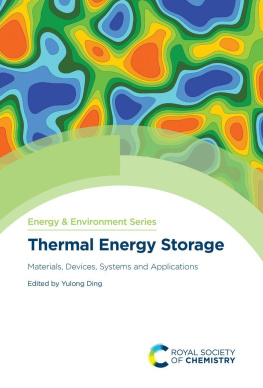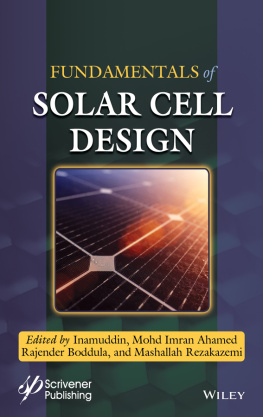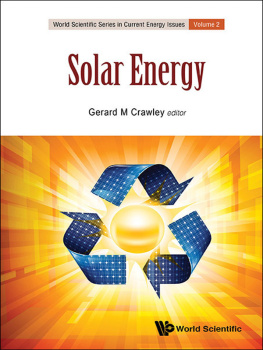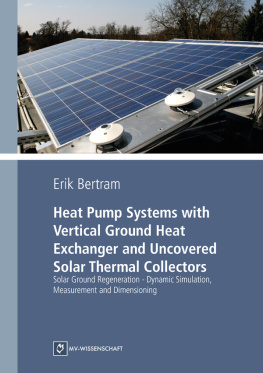
SCIENCES
Energy, Field Directors Alain Dollet and Pascal Brault
Renewable Energies, Subject Head Abdelilah Slaoui
Concentrating Solar Thermal Energy
Fundamentals and Applications
Coordinated by
Gilles Flamant

First published 2022 in Great Britain and the United States by ISTE Ltd and John Wiley & Sons, Inc.
Apart from any fair dealing for the purposes of research or private study, or criticism or review, as permitted under the Copyright, Designs and Patents Act 1988, this publication may only be reproduced, stored or transmitted, in any form or by any means, with the prior permission in writing of the publishers, or in the case of reprographic reproduction in accordance with the terms and licenses issued by the CLA. Enquiries concerning reproduction outside these terms should be sent to the publishers at the undermentioned address:
ISTE Ltd
27-37 St Georges Road
London SW19 4EU
UK
www.iste.co.uk
John Wiley & Sons, Inc.
111 River Street
Hoboken, NJ 07030
USA
www.wiley.com
ISTE Ltd 2022
The rights of Gilles Flamant to be identified as the author of this work have been asserted by him in accordance with the Copyright, Designs and Patents Act 1988.
Any opinions, findings, and conclusions or recommendations expressed in this material are those of the author(s), contributor(s) or editor(s) and do not necessarily reflect the views of ISTE Group.
Library of Congress Control Number: 2022940279
British Library Cataloguing-in-Publication Data
A CIP record for this book is available from the British Library
ISBN 978-1-78945-079-8
ERC code:
PE8 Products and Processes Engineering
PE8_6 Energy processes engineering
Introduction
Gilles FLAMANT
PROMES-CNRS, Font-Romeu, France
Why a book on concentrated solar power?
Renewable energies play an important or even dominant role in the medium- and long-term energy strategy of most countries. In this context, any solution that may contribute to the emergence of a low-carbon world should be carefully considered. France, a country with a strong nuclear energy deployment, has also conducted groundbreaking research in the field of solar power, particularly concentrated solar power, which was not developed to the same level as nuclear power. Sixty-five years ago, at the end of World War II, Flix Trombe reversed the path of light on the parabolic spotlights of the anti-aircraft defense deployed by the German army around Paris and transformed them into solar concentrators. This is a magnificent symbol of revival, which in itself is sufficient to justify this book. However, it is obviously not the only reason. As a result of research and development, this technology reached the commercial stage for certain architectures of solar power plants, but concentrated solar power is still struggling to find its place next to wind power and photovoltaics. There are three main reasons for this delay, namely modularity, financing mechanisms and deployment area. Even though wind power and photovoltaics benefit from a positive scale effect, the latter is far more significant for concentrated solar power. Consequently, on the one hand, the manufacturing cost of small solar power plants (< 10 MW) is not competitive unless cogeneration can be considered, and, on the other hand, building large power plants requires significant capital, therefore heavy financial expenses. The only modular systems adapted to small installation markets (for private consumers, for example) are the dishStirling systems whose operation and maintenance are more expensive than those of a PV system of equivalent power. This observation is related to a second point. The implementation of an attractive feed-in tariff for private consumers, then for ground power units, enabled the development of photovoltaics (accompanied by cost reduction) for a wide range of power and users. Equivalent mechanisms (negotiated feed-in tariff) were established for concentrated solar power in certain countries, but for a far narrower market. Indeed, the geographical area that is favorable to the deployment of this technology is smaller than that of PV. No one would consider installing solar thermal power plants in Germany, which was at the forefront of the introduction of photovoltaics on its territory! Finally, the multiplicity of possible configurations in which a solar power plant can be assembled from basic components is not only a strength, but also a weakness when considering the cost reduction associated with series production.
However, in this seemingly unfavorable context, concentrated solar power has its own place, in addition to wind power and photovoltaics. It offers solutions for low-cost bulk heat storage and can be deployed in fields of applications beyond electricity, such as industrial process heat and synthetic fuels (hydrogen, syngas, etc.). This book focuses on a presentation of various aspects of this solar technology, from components to the full system. It was written by researchers, professors, assistant professors (University of Perpignan Via Domitia UPVD) and PhD alumni of PROMES (Processes, Materials and Solar Energy Laboratory) of CNRS, successors of Flix Trombe and Marc Foex, founders of the solar furnace of Odeillo- Font-Romeu. This book is structured into 11 chapters:
After a brief history, presents the various existing technologies and their evolution perspectives in technical and economic terms.
introduces the physical processes that condition the evolution of radiation intensity at the ground level, the measurement instruments (total and direct normal irradiation, DNI) and DNI prediction models.
presents the physical laws of mirror-based concentration and the influence of associated defects on the performance of concentrators. It presents parabolic trough concentrators (linear concentration) and solar power towers (point concentration) as illustrations.
Echoing describes the receivers for parabolic trough and tower power plants. It details a physical model of a receiver for a tower power plant.
After a refresher of heat transfer physics, presents fluidwall heat transfer properties and coefficients of the main heat transfer fluids.
is dedicated to the physical bases of transfers in turbulent flows and to the numerical developments required for the comprehension of complex interactions between the dynamic and thermal aspects of fluid flow.
presents the spectral properties of bodies. Then, it describes materials adapted to various components of a solar power plant, and approaches the techniques for the evaluation of their service life.
describes the storage technologies and the recent progress in thermocline storage, a key component of a modern solar thermal power plant. It also proposes a comparison of the costs of heat storage and electrochemical storage.
analyzes and compares various concepts of hybridization between photovoltaic and heat converters, designed as combined solar energy conversion modes.
describes the processes for the thermochemical production of hydrogen and synthetic gas from carbonaceous materials. This analysis is accompanied by technical and economic considerations.
presents various cycles for thermochemical decomposition of H2O and CO2, as well as their development level. It analyzes the progress in terms of materials and processes.
Next page
